Nanzen-ji Temple, located in Nanzen-ji-fukuchi-cho, Sakyo Ward, Kyoto City, is the headquarters of the Nanzen-ji branch of the Rinzai Sect of Zen Buddhism.
The temples of the Rinzai sect have two formality which are called ‘Kyoto Gozan’ and ‘Kamakura Gozan’.
Nanzen-ji Temple is not itself one of the Kyoto Gozan (Five Great Zen Temples of Kyoto) but presides over them all and holds the highest rank of all Japan’s Zen temples.
In a word,
The best temple belonging to the Zen sect in Japan.
In addition, this temple is also particularly famous for its beautiful autumn leaves.
Contents:
- About Nanzen-ji Temple
- Visitor Information
- About Kyoto Gozan (Five Great Zen Temples of Kyoto)
- Colored leaves of Nanzen-ji Temple
- The highlights of Nanzen-ji Temple
- Goshuin (the stamp of shrine or temple) of Nanzen-ji Temple
- How to get to Nanzen-ji Temple
1.About Nanzen-ji Temple
Nanzen-ji (南禅寺 Nanzen-ji), or Zuiryusan Nanzen-ji, formerly Zenrin-ji (禅林寺 Zenrin-ji), is a Zen Buddhist temple in Kyoto, Japan. Emperor Kameyama established it in 1291 on the site of his previous detached palace. It is also the headquarters of the Nanzen-ji branch of Rinzai Zen. The precincts of Nanzen-ji are a nationally designated Historic Site and the Hōjō gardens a Place of Scenic Beauty.
引用(citation):https://en.wikipedia.org/wiki/Nanzen-ji
Open:8:40~17:00(March – November), 8:40~16:30(December – February)
Admission Fee(Hojo garden):500 yen(Adult), 400 yen(High school student), 300 yen(Elementary / Junior high school student)
Admission Fee(Sanmon gate):500 yen(Adult), 400 yen(High school student), 300 yen(Elementary / Junior high school student)
Admission Fee(Nanzen-in Temple):300 yen(Adult), 250 yen(High school student), 150 yen(Elementary / Junior high school student)
Address:Nanzenji Fukuchicho, Sakyo-ku Kyoto-shi, Kyoto, 606-8435, Japan
Phone Number:+81-75-771-0365
Foundation:1291
Founder:Emperor Kameyama
Sect:Nanzen-ji branch of the Rinzai Sect
Principal image:Shaka Nyorai (Shakyamuni)
Nanzen-ji Temple, located in Nanzen-ji-fukuchi-cho, Sakyo Ward, Kyoto City, is the headquarters of the Nanzen-ji branch of the Rinzai Sect of Zen Buddhism.
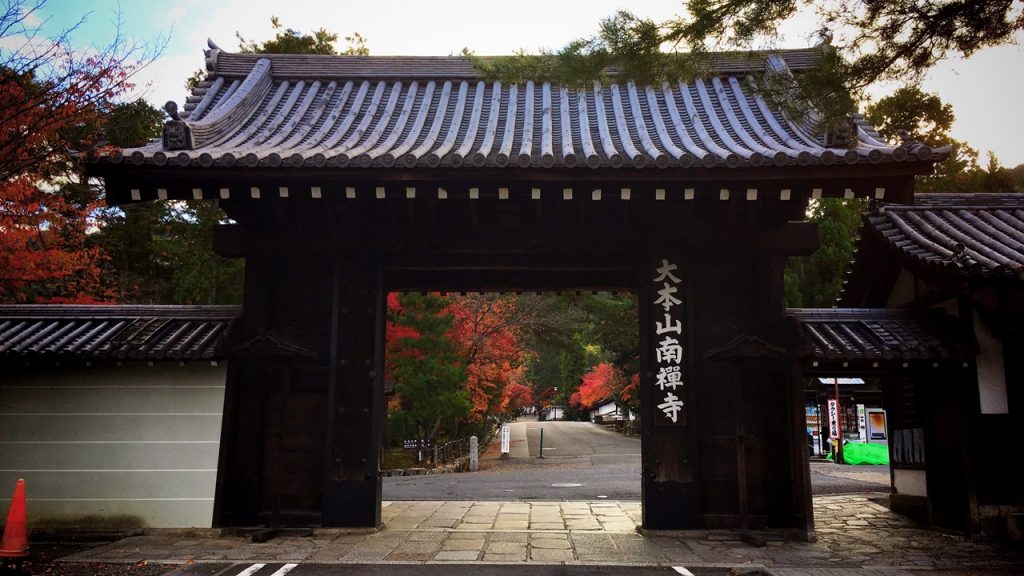
The honorific mountain prefix is Zuiryusan and it goes under the formal title of Taiheikokoku-Nanzen-Zenji.
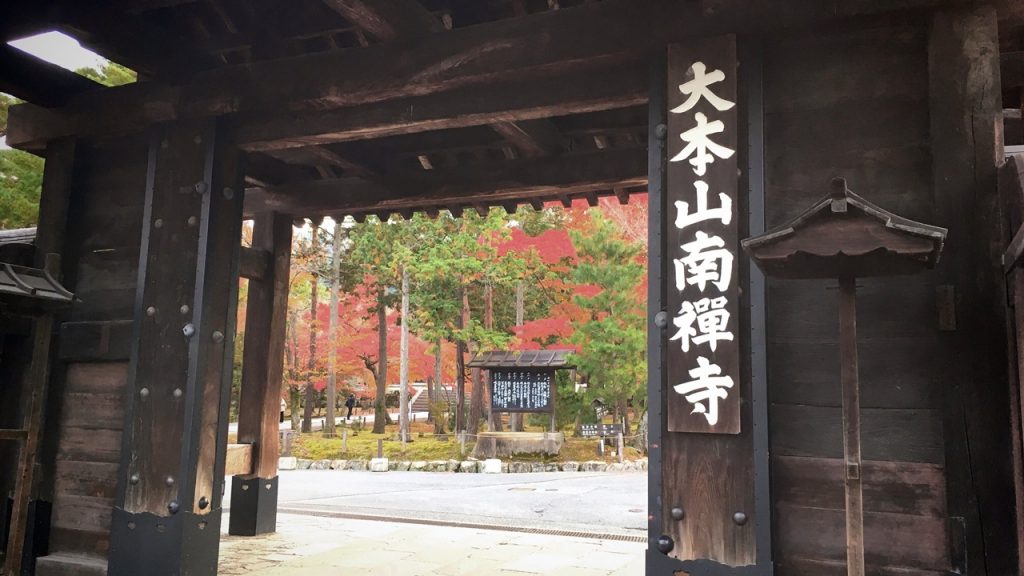
This temple was founded by Emperor Kameyama and kaisan (first chief priest) is Mukan Fumon (Daimyo-kokushi), and its principal image is Shaka Nyorai (Shakyamuni).
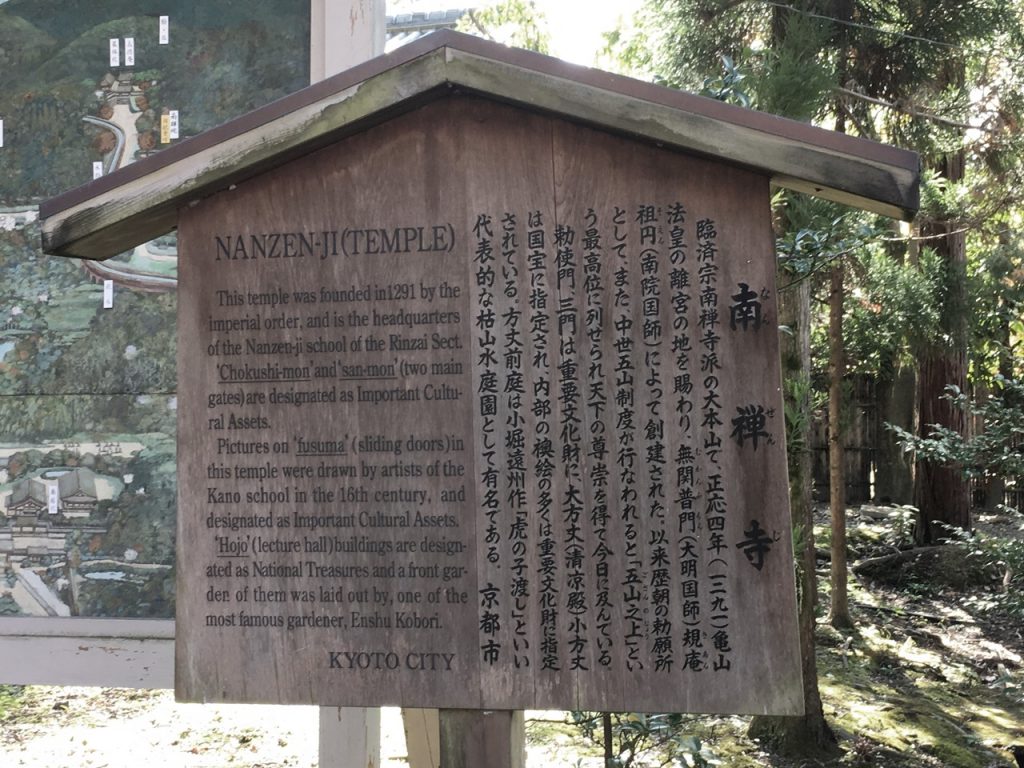
Nanzen-ji Temple precinct was nationally designated a historic site in 2005.
In addition, it is the famous place of colored leaves just like with Eikan-do temple.
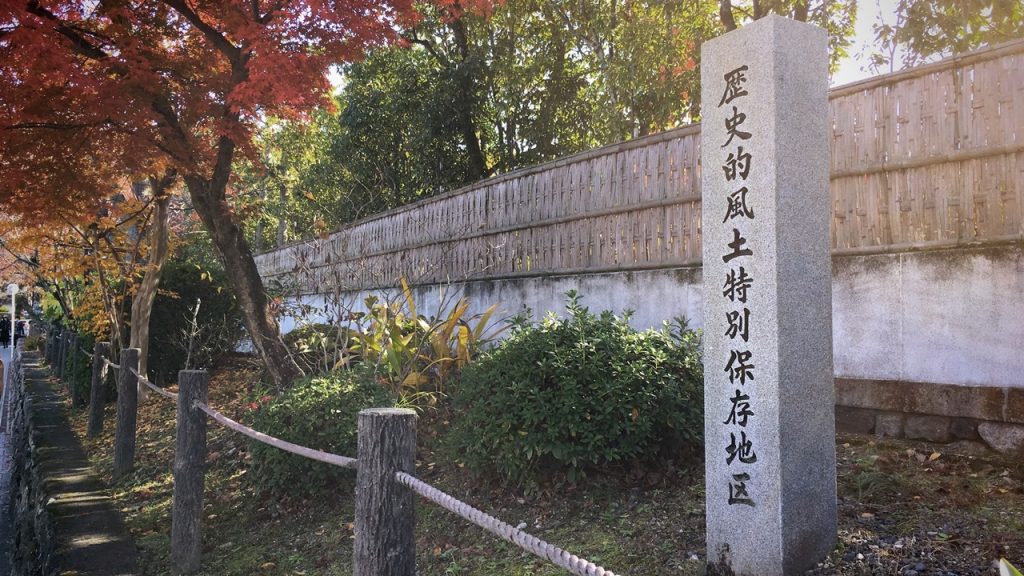
There are three pay areas (‘Hojo Garden’, ‘Sanmon gate’ and ‘nanzen-in Temple’) in Nanzen-ji Temple.
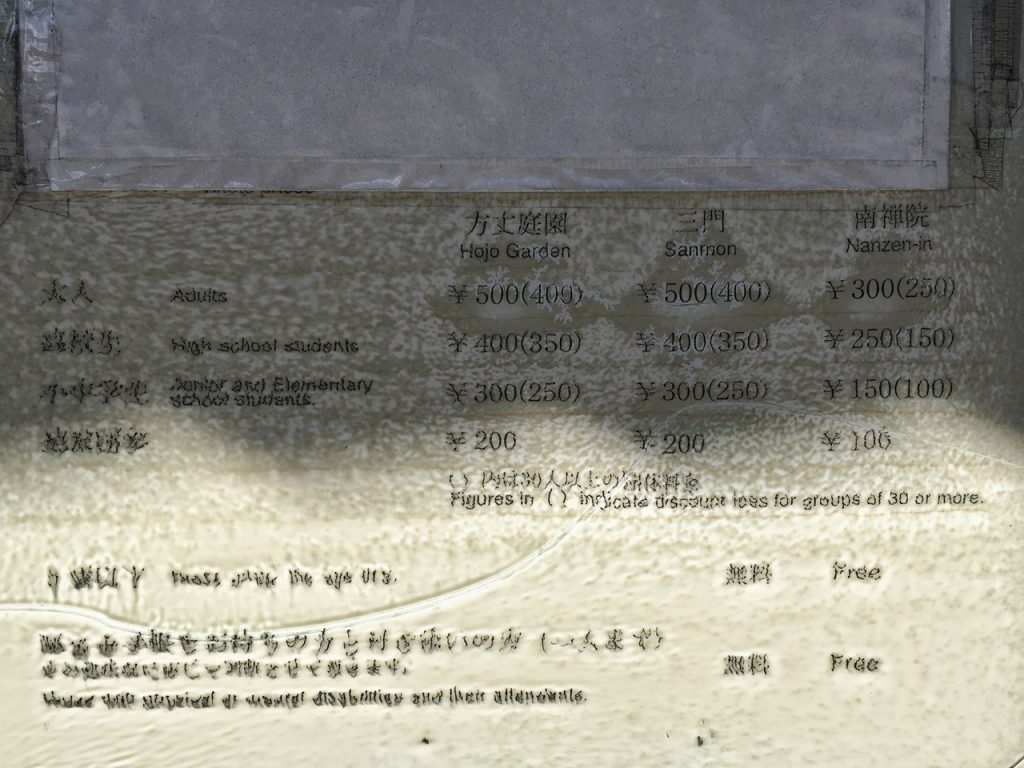
2.Visitor Information
・Photography and video recording were prohibited inside the building of this temple.
(The outside of the building and the gardens are OK.)
Let’s follow a rule.
3.About Kyoto Gozan (Five Great Zen Temples of Kyoto)
Kyoto Gozan Temples refers the status of a Buddhist temple, and to the system of state-sponsored temples of the Zen sect (Rinzai sect) in Kyoto among the Five Mountain System.
Now, the status of a Buddhist temple of Kyoto Gozan Temples is as follows.
別格:南禅寺(Bekkaku (exceptional) – Nanzen-ji Temple)
第一位:天龍寺(The first grade – Tenryu-ji Temple)
第二位:相国寺(The second grade – Shokoku-ji Temple)
第三位:建仁寺(The third grade – Kennin-ji Temple)
第四位:東福寺(The fourth grade – Tofuku-ji Temple)
第五位:万寿寺(The fifth grade – Manju-ji Temple)
Now, Nanzen-ji Temple is not itself one of the Kyoto Gozan (Five Great Zen Temples of Kyoto) but presides over them all and holds the highest rank of all Japan’s Zen temples.
Before Nanzen-ji Temple was founded, the site was the location of Emperor Gosaga’s detached palace Zenrin-ji-dono Palace, which was built in 1264.
(The palace was named ‘Zenrin-ji-dono’ after Zenrin-ji Temple (Kyoto City) (Eikan-do), the headquarters of the Seizan-Zenrin-ji branch of the Pure Land Sect that still stands to the north of Nanzen-ji Temple.)
This palace was made into a real temple by Emperor Kameyama and it became the Nanzen-ji in 1291.
In 1334, Emperor Go-daigo placed Nanzen-ji Temple as number one of the Kyoto Gozan but in 1385 Yoshimitsu ASHIKAGA placed his own Shokoku-ji Temple at number one so Nanzen-ji Temple was treated as a special case and ranked higher than all the Gozan temples.
4.Colored leaves of Nanzen-ji Temple
I went on November 16 A.M.
The condition of the colored leaves in that day was approximately 90%.
I arrived to Nanzen-ji Temple at 7:30 a.m.
(It was not crowded until around 8:00 a.m.)
But, please be careful because a tourist and the school excursion student of the group visit this temple when it is past 8:00 a.m.
From this point on, let’s watch a photo and video of Nanzen-ji Temple’s autumn leaves.
■Youtube:南禅寺の紅葉:京都(Autumn leaves of Nanzen-ji Temple, Kyoto)
■Photo
How did you like it?
Next, let’s watch the highlight of Nanzen-ji Temple!!
5.The highlights of Nanzen-ji Temple
- 中門:Chu-mon gate
- 勅使門(重要文化財):Chokushi-mon gate (gate for Imperial Envoys) (Important cultural property)
- 三門(重要文化財):Sanmon Gate (Important cultural property)
- 法堂:Hatto hall (Lecture hall)
- 本坊・書院:Hombo (Kuri)・Shoin (Study hall)
- 方丈(国宝):Hojo (Abbot’s Quarters) (National treasure)
- 水路閣:Suirokaku (the waterway bridge)
●中門:Chu-mon gate
This is the Chu-mon gate.
This gate was donated in 1601 by Yasuyuki MATSUI who was a busho (Japanese military commander) in the Sengoku period.

●勅使門(重要文化財):Chokushi-mon gate (gate for Imperial Envoys) (Important cultural property)
This is the Chokushi-mon gate (gate for Imperial Envoys) which is designated as an important cultural property.
This gate was rebuilt in 1641 by Empress Meisho.
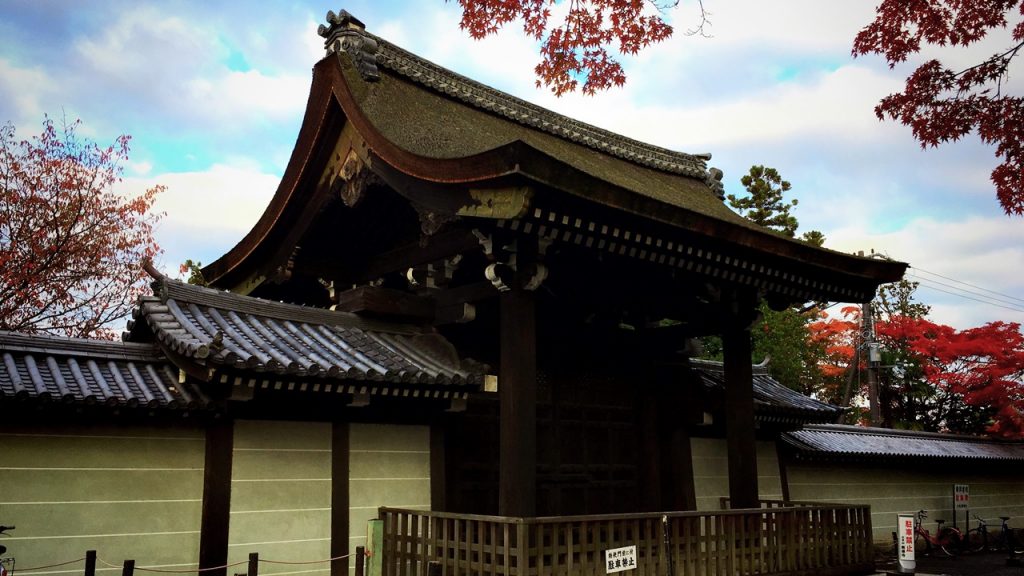
●三門(重要文化財):Sanmon Gate (Important cultural property)
This is the Sanmon Gate which was built in 1628 designated as an important cultural property.
This gate is one of the Japanese three big buddhist gates.
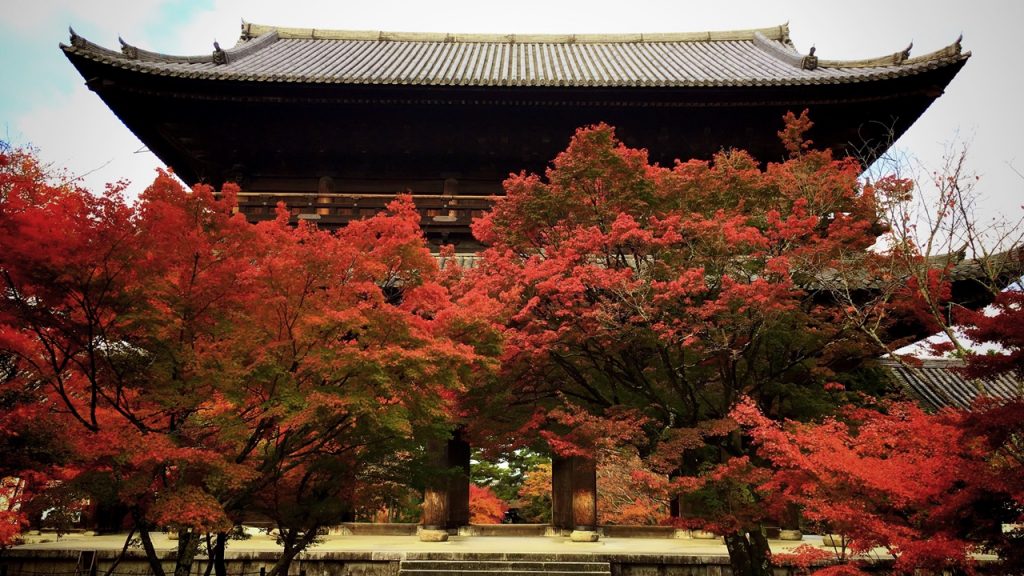
This gate is the stage of a kabuki program named ‘Sanmon Gosan no Kiri‘.
Goemon Ishikawa who is the master thief in Japan said such words at the roof of this gate.
‘What a superb view, what a superb view!!’
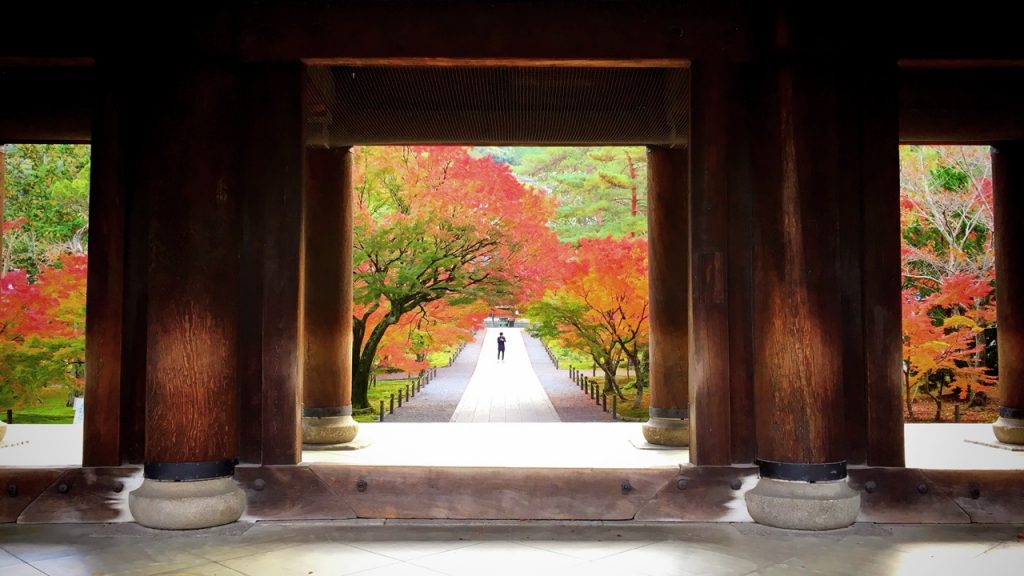
An admission fee of Sanmon gate is 500 yen (Adult).

‘What a superb view, what a superb view!!’
I could understand his feeling well!!

Statues of the 16 Rakans and Shaka Shaka Nyorai (Shakyamuni) which is the principal image of this temple are enshrined in the Sanmon Gate.

●法堂:Hatto hall (Lecture hall)
This is the Hatto hall (Lecture hall) which was rebuilt in 1909.
Official Buddhist memorial services are held at this building.
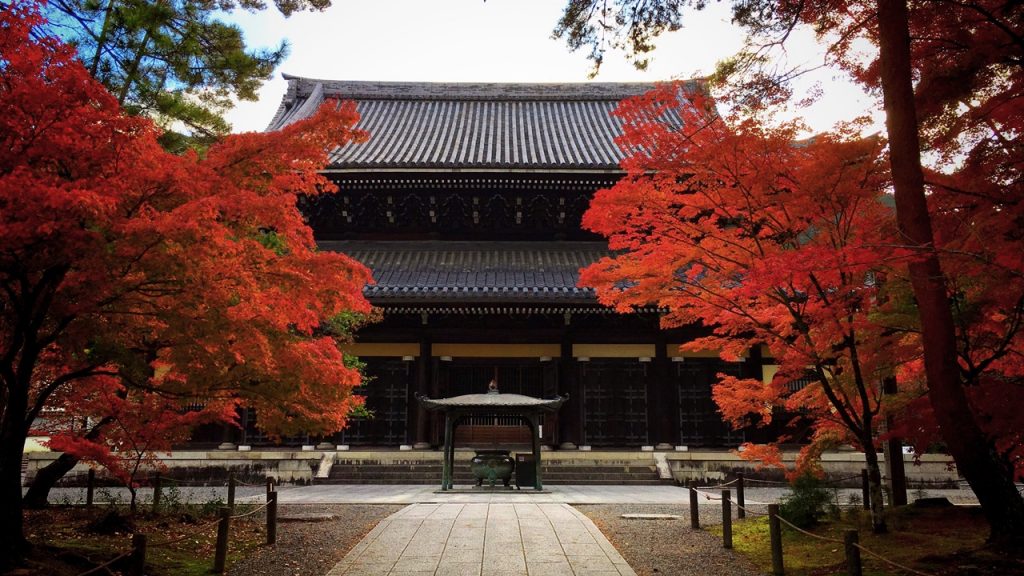
This gate was donated in 1606 by Hideyori TOYOTOMI who was the Daimyo of the Edo period.
However, this building was broken by a fire in 1893, and rebuilt in 1909.
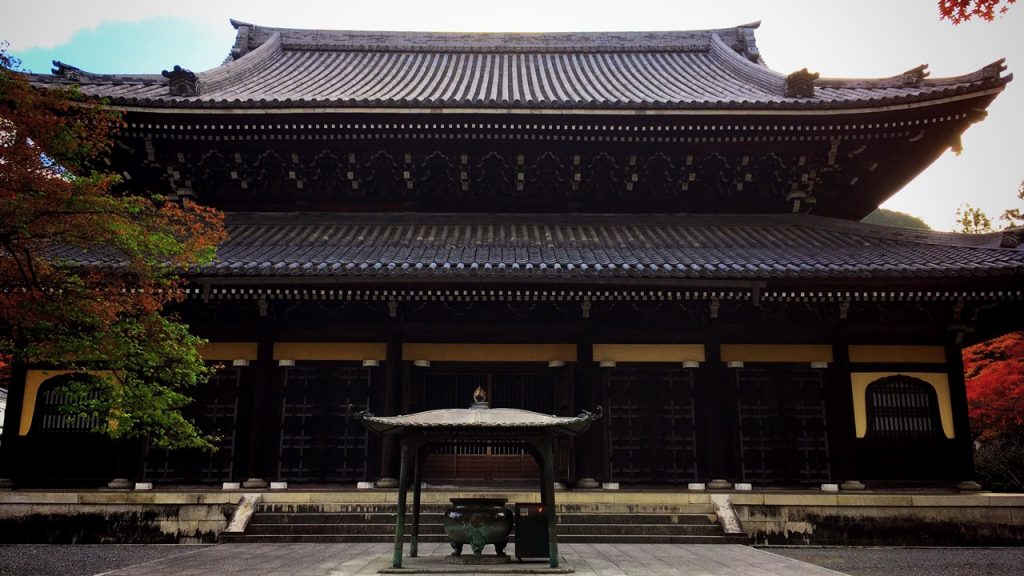
●本坊・書院:Hombo (Kuri)・Shoin (Study hall)
This is the Hombo (Kuri)・Shoin (Study hall).
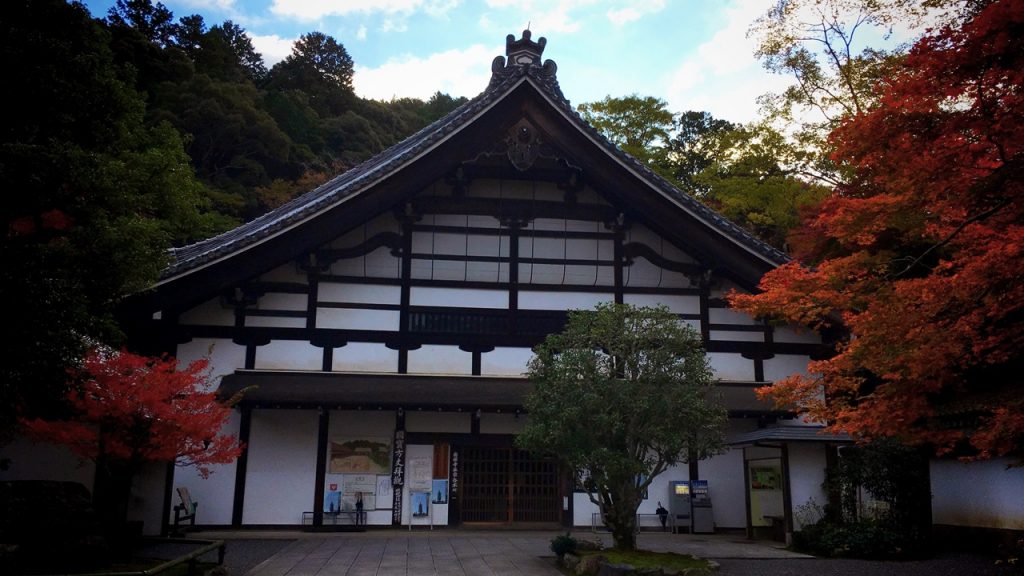
●方丈(国宝):Hojo (Abbot’s Quarters) (National treasure)
An admission fee of Hojo and Hojo garden is 500 yen (Adult).
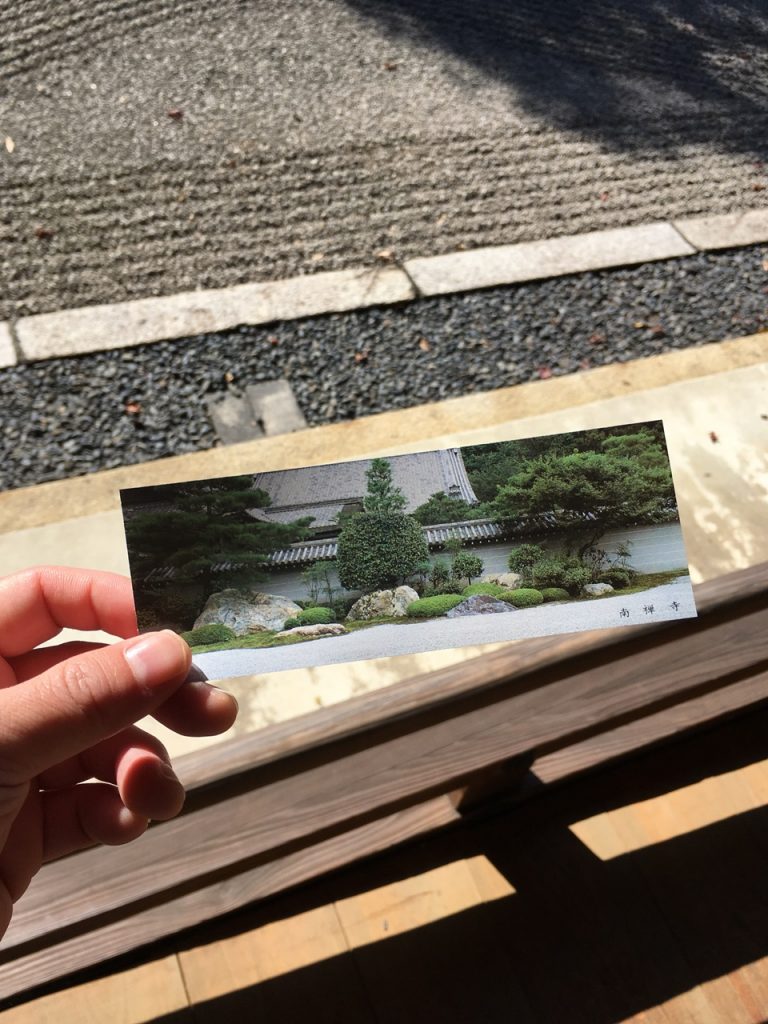
This is the Hojo which was rebuilt in 1611.
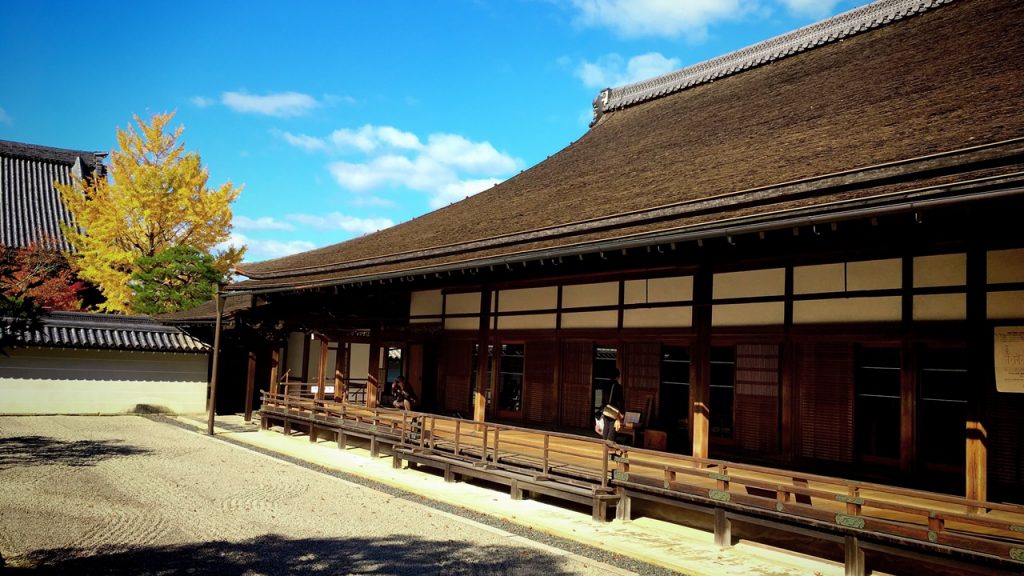
There are nine gardens in this building.
The first garden;
This is the first garden of this building which is called ‘Hojo garden‘ designated as a national scenic beauty.
This garden was made by Enshu KOBORI who was a famous gardener of the Edo period.
This garden has also been called “Crossing of the Tiger Cubs Garden“.
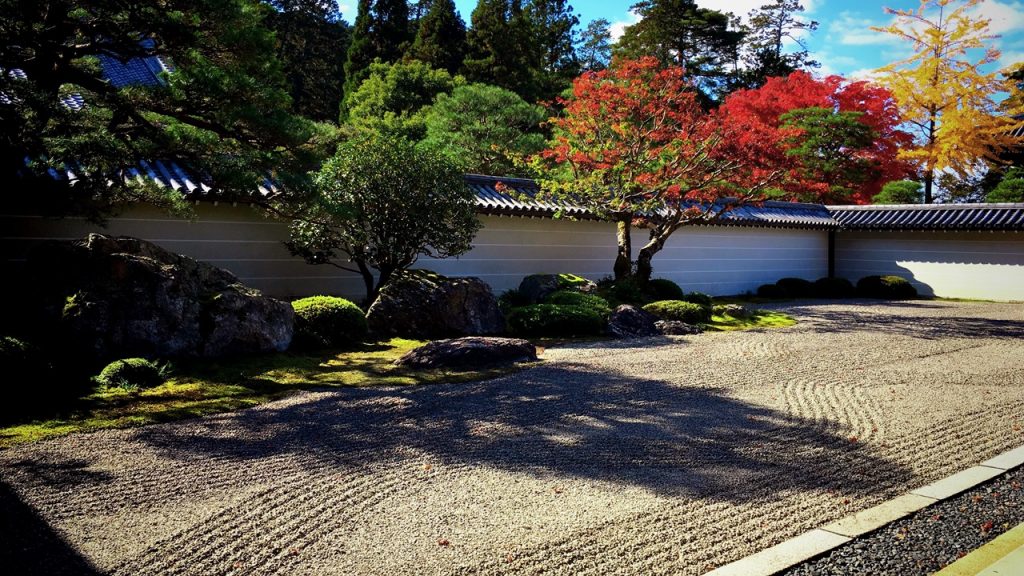
The second garden;
This is the second garden of this building which is called ‘Nyoshin-tei garden‘.
The stones of this garden are put in the form of the kanji called “心(heart)”.
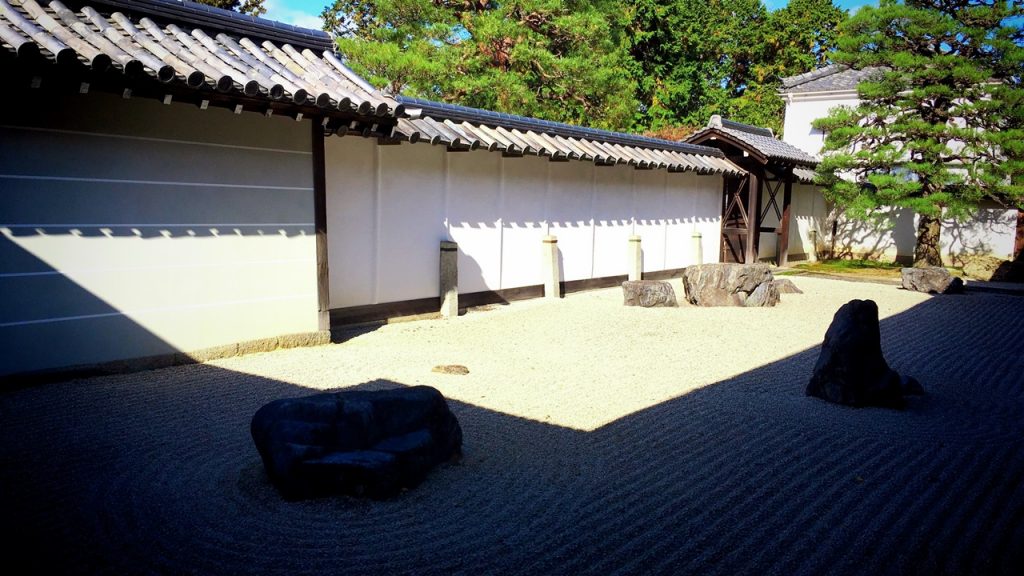
The third garden;
This is the third garden of this building which is called ‘Rokudo-tei garden‘.
This garden expresses Rokudo which is the one of the thought of the Zen Buddhism.
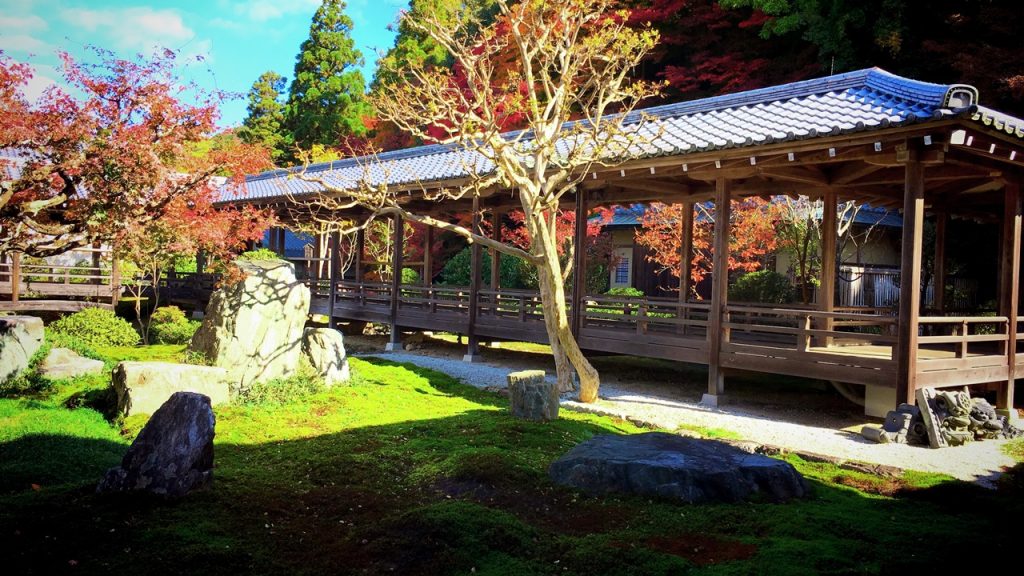
The fourth garden;
This is the fourth garden of this building which is called ‘Horaishinsen-tei garden‘.
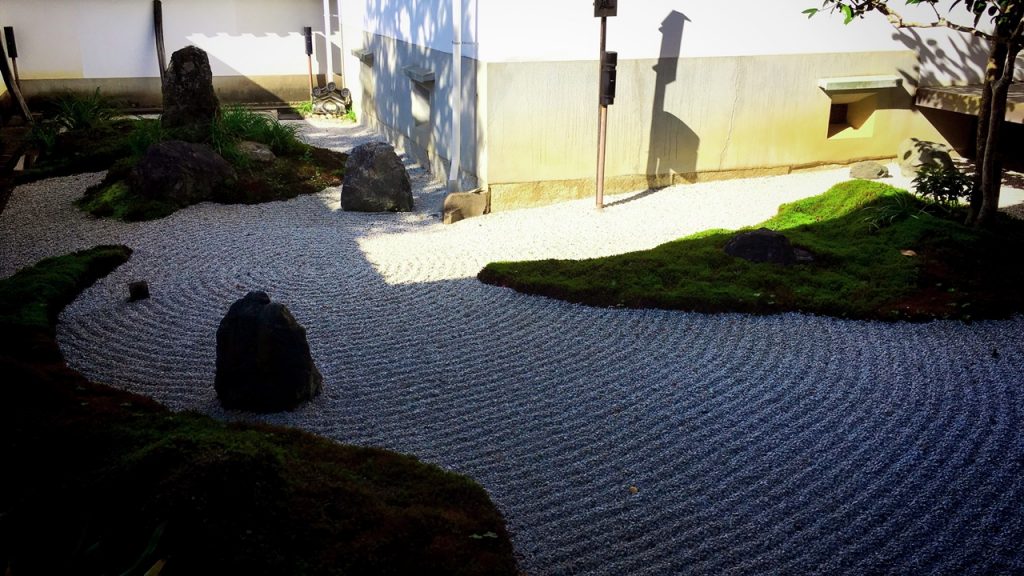
The fifth garden;
This is the fifth garden of this building which is called ‘Ryugin-tei garden‘.
The building in the depth of this garden is Fushiki-an which is the tea room.
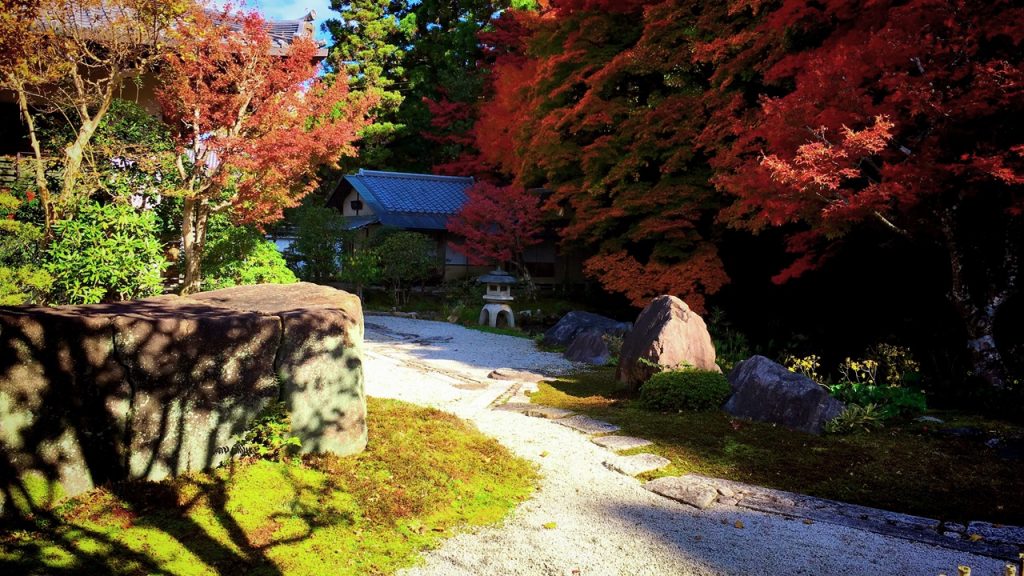
The sixth garden;
This is the sixth garden of this building which is called ‘Kegon-tei garden’.
The fence of this garden is called ‘Nanzen-ji Temple fence‘.
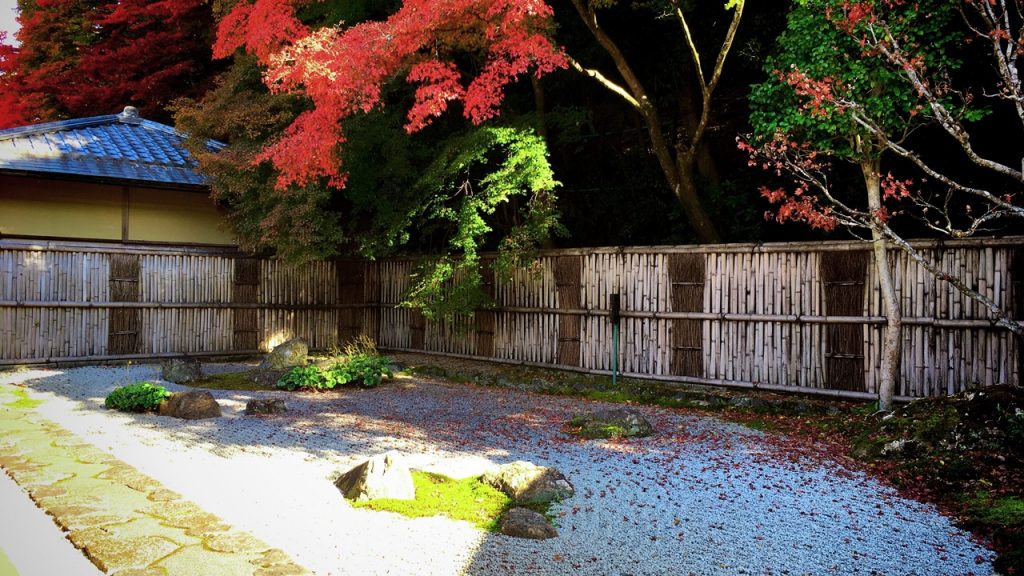
This is Kyushin-tei which is the neighbouring tea room in this garden.
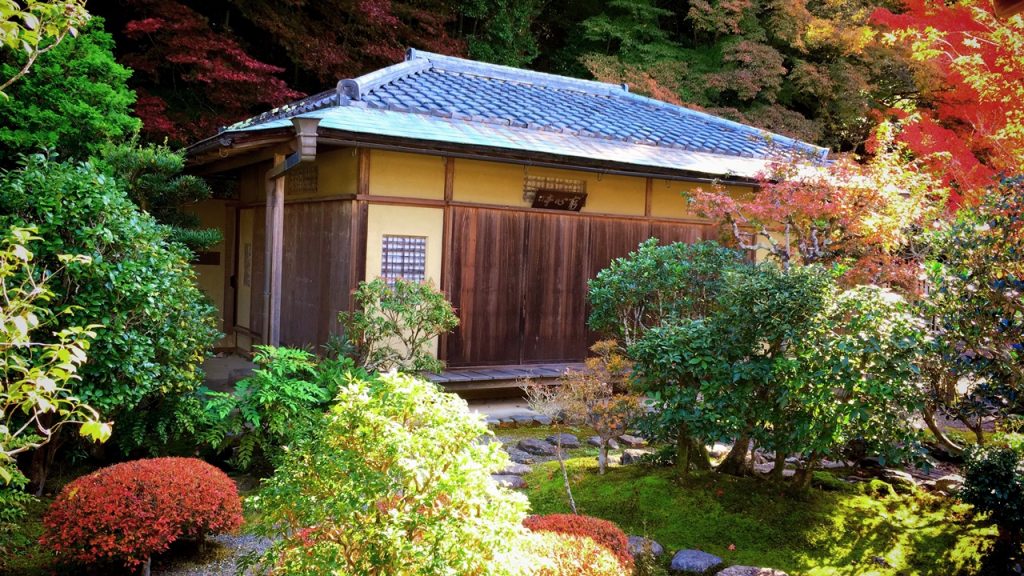
The seventh garden;
This is the senenth garden of this building which is called ‘Narutaki-tei garden‘.
The big inkstone is put in this garden.
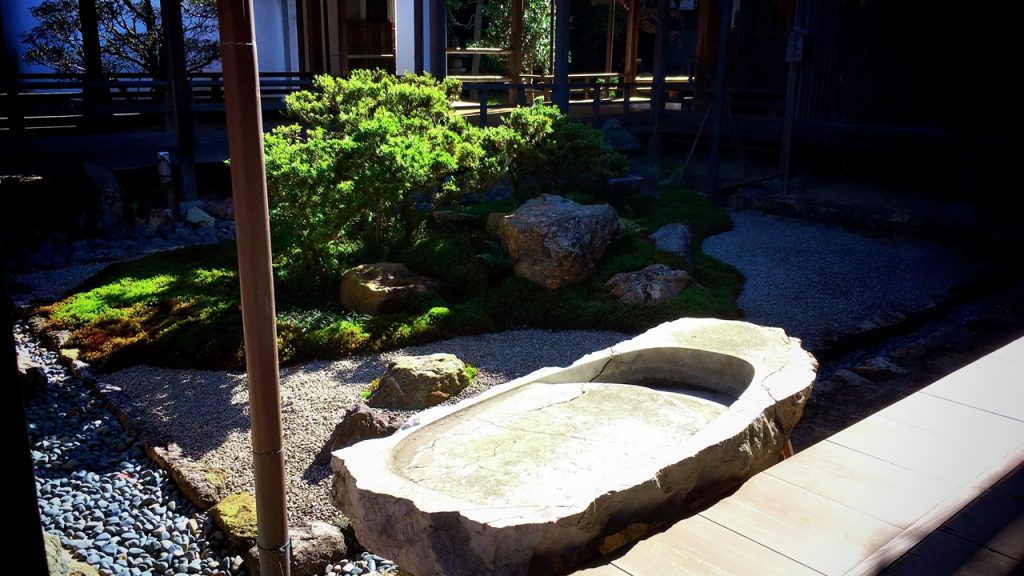
The eighth garden;
This is the eighth garden of this building which is called ‘Gengen-tei garden‘.
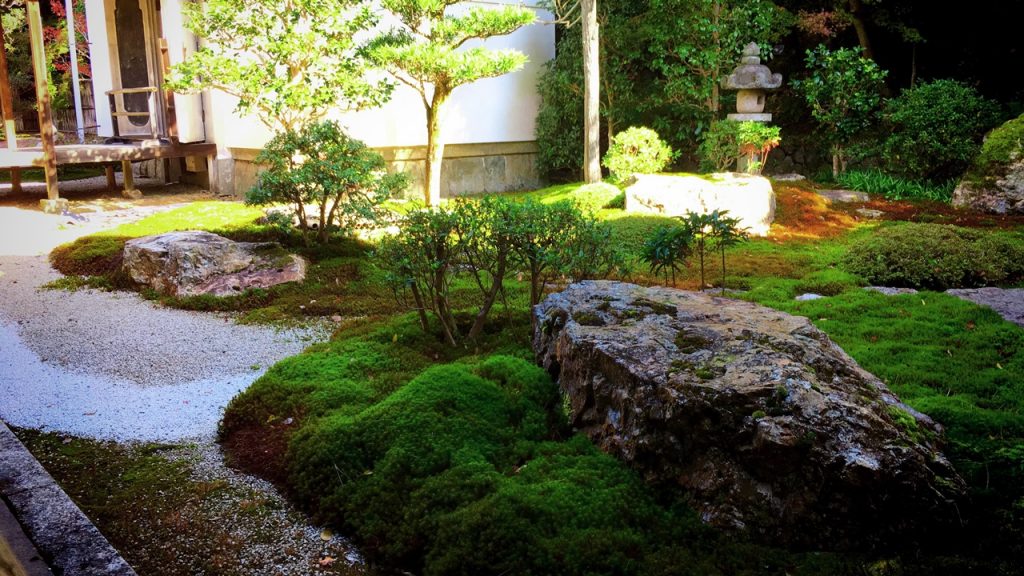
The nineth garden;
This is the nineth garden of this building which is called ‘Ogenkan garden‘.
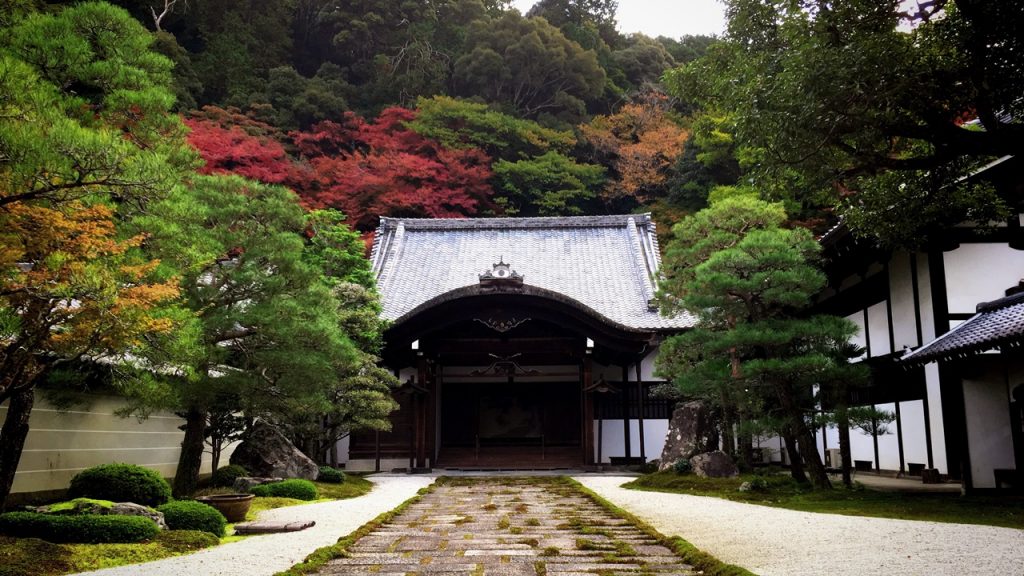
●水路閣:Suirokaku (the waterway bridge)
This is the Suirokaku (the waterway bridge).
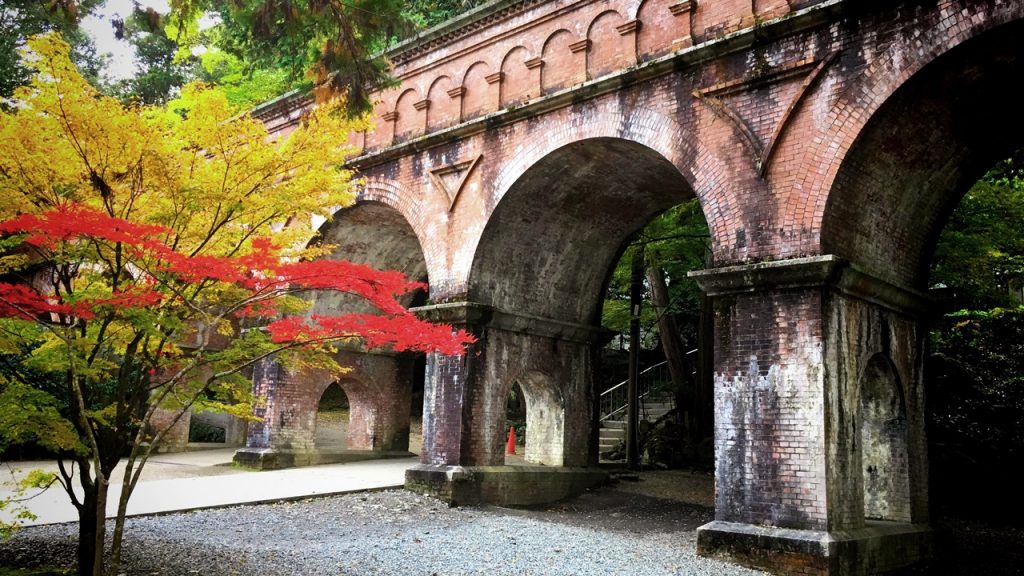
This waterway was built in 1888 to draw water into Kyoto from Lake Biwa.
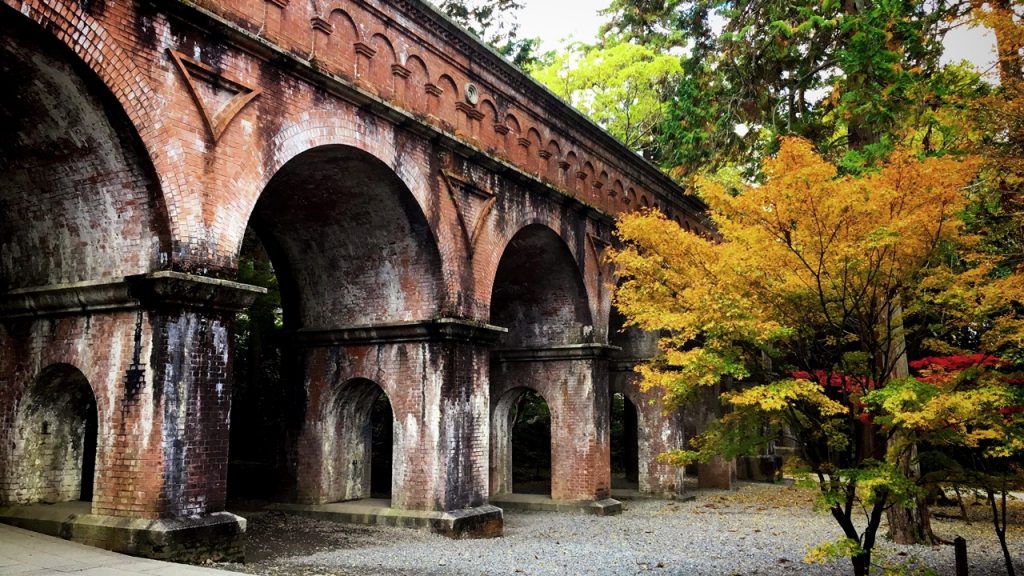
This waterway is made with a red brick and is like waterway of the ancient Roman age.
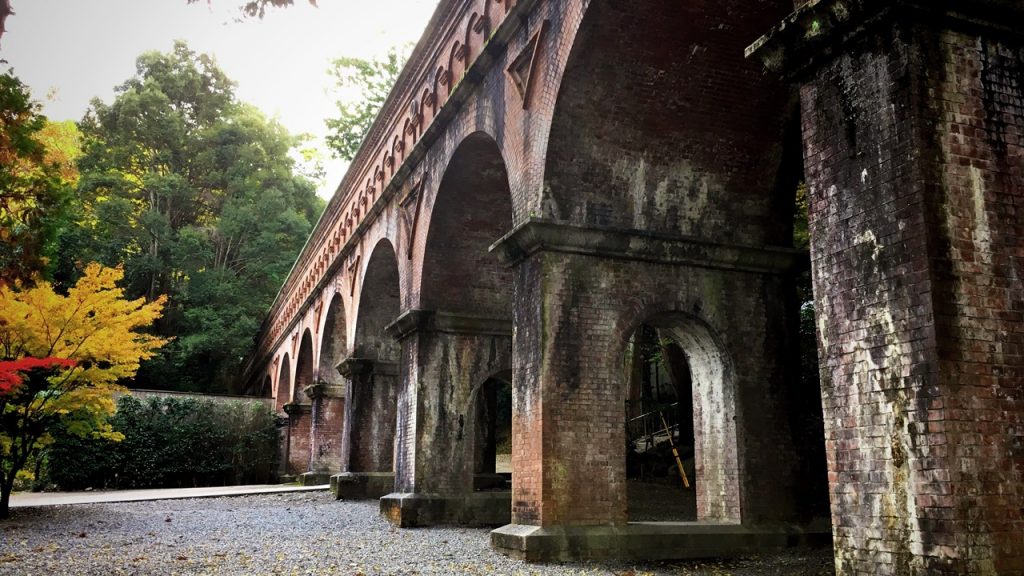
It is often used as a location site for the Japanese suspense dramas.
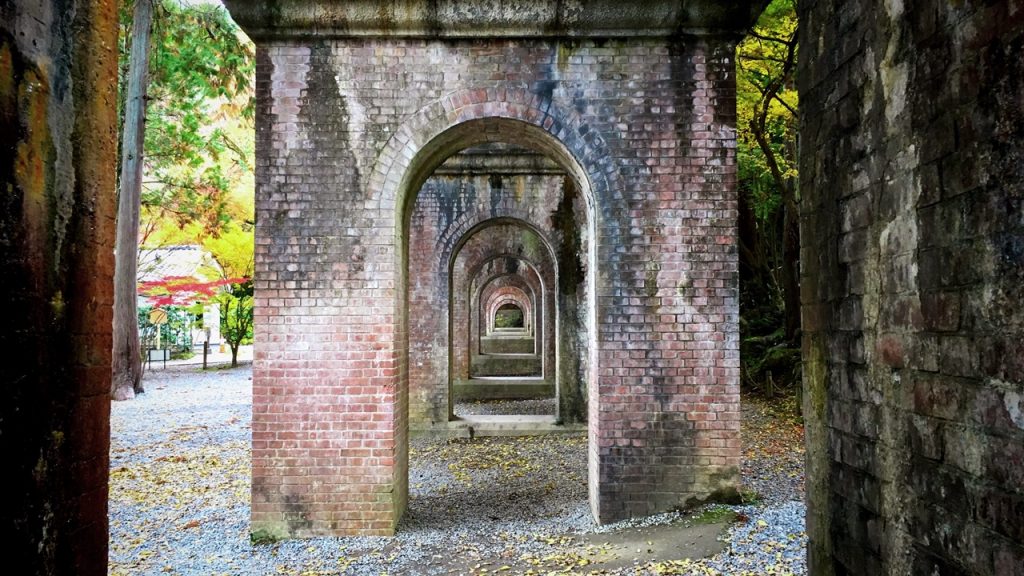
6.Goshuin (the stamp of shrine or temple) of Nanzen-ji Temple
This Temple’s Sumigaki(The words which was written with a sumi(black ink)) is “金剛王宝殿(Kongo-oho-den)” which is the another name of Hatto hall of this temple.
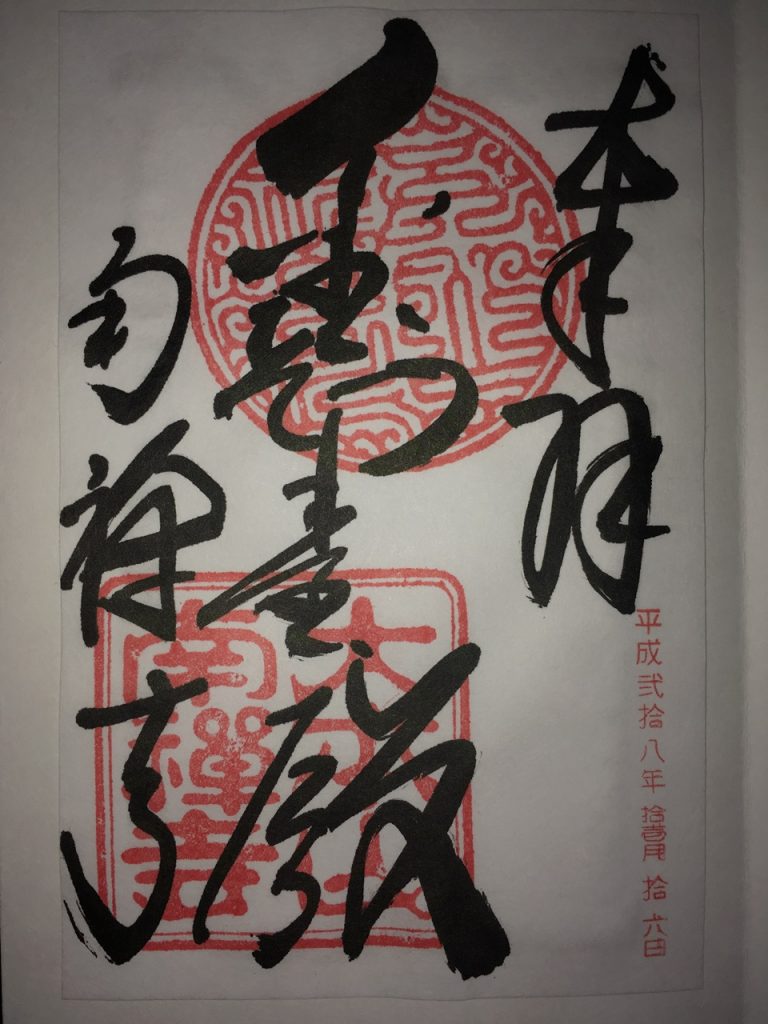
7.How to get to Nanzen-ji Temple
The nearest station of Nanzen-ji Temple is “Subway Keage Station”.
(We can also go by bus from “JR Kyoto Station”, “Keihan Sanjo Station”.)
■Keage Station→Nanzen-ji Temple
We go on foot from Keage Sta. to Nanzen-ji Temple.
It’s about 10 minutes (500m) on foot.
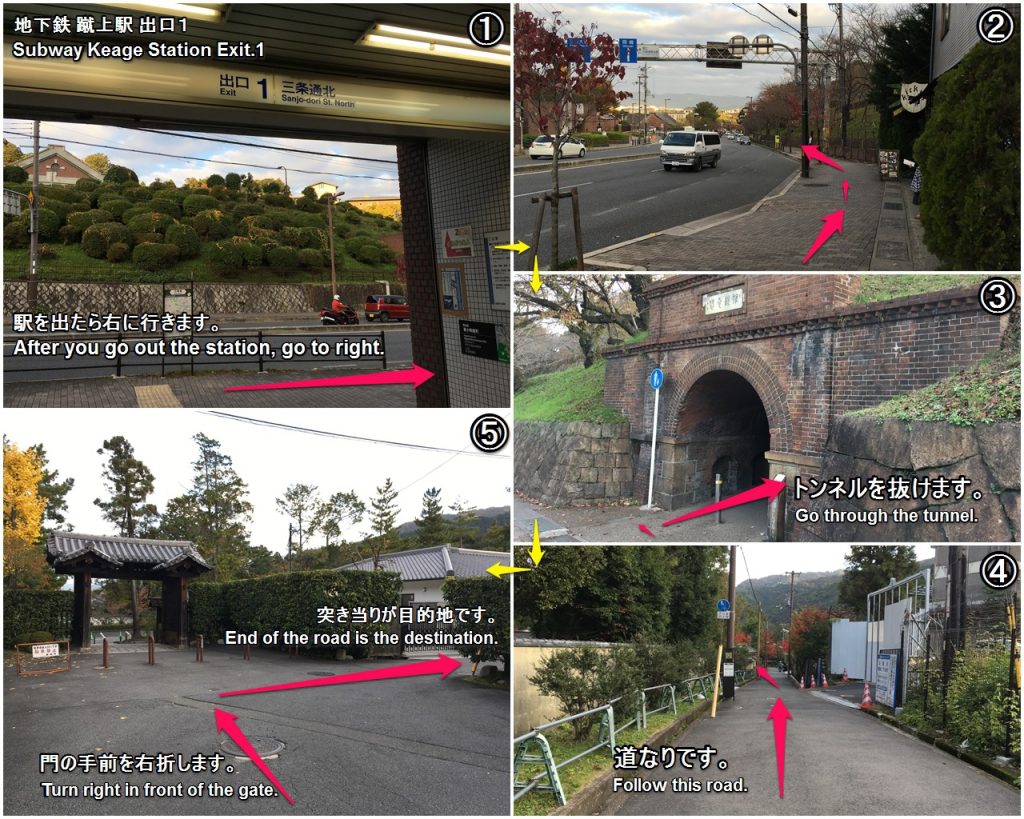
■In the case of bus
①When you get on a bus from JR Kyoto Station
Timetable and Route Search of bus
[Timetable]Route No.5
[Timetable]Route No.100
Bus company:Kyoto City Bus
Routes/Destination:No.5[for Ginkakuji/Iwakura], No.100[Kiyomizudera/Ginkakuji]
Boarding bus stop:Kyoto Sta.[A1]or[D1]
Alighting bus stop:No.5[Nanzenji Eikando-michi], No.100[Higashitennocho]
Bus fare:230 yen
Time required:About 35 min
②When you get on a bus from Keihan Sanjo Station
Timetable and Route Search of bus
[Timetable]Route No.5
Bus company:Kyoto City Bus
Routes/Destination:No.5[for Ginkakuji/Iwakura]
Boarding bus stop:Sanjo Keihan-mae[D]
Alighting bus stop:Nanzenji Eikando-michi
Bus fare:230 yen
Time required:About 10 min
How did you like it?
Please try to go.
Have a nice trip! XD
<Let’s search the sightseeing information of Kansai in Japan on ‘Japan’s Travel Manual‘!!>
<This site introduces the easiest way to get Japanese (Kansai) sightseeing spots to you.>


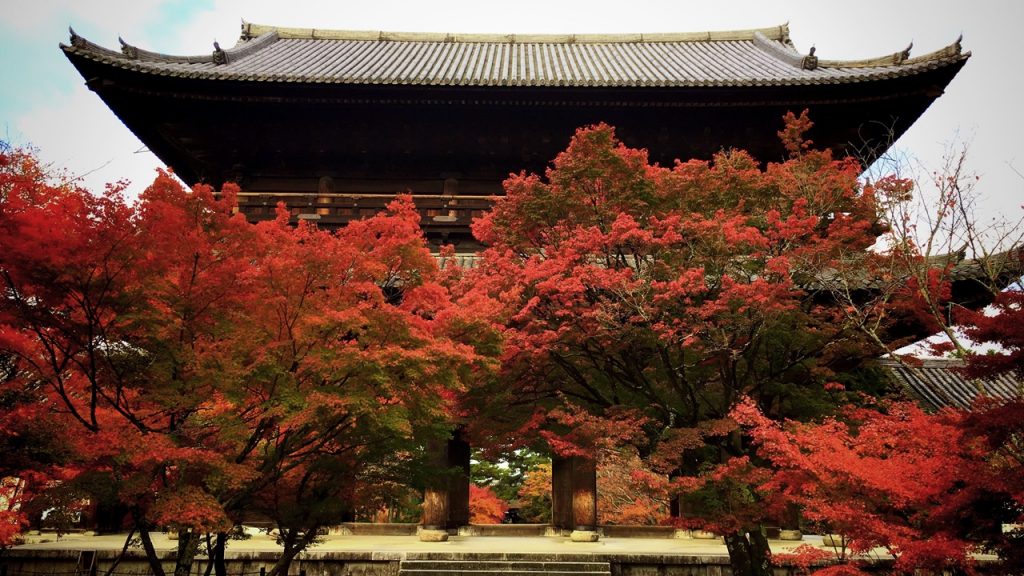

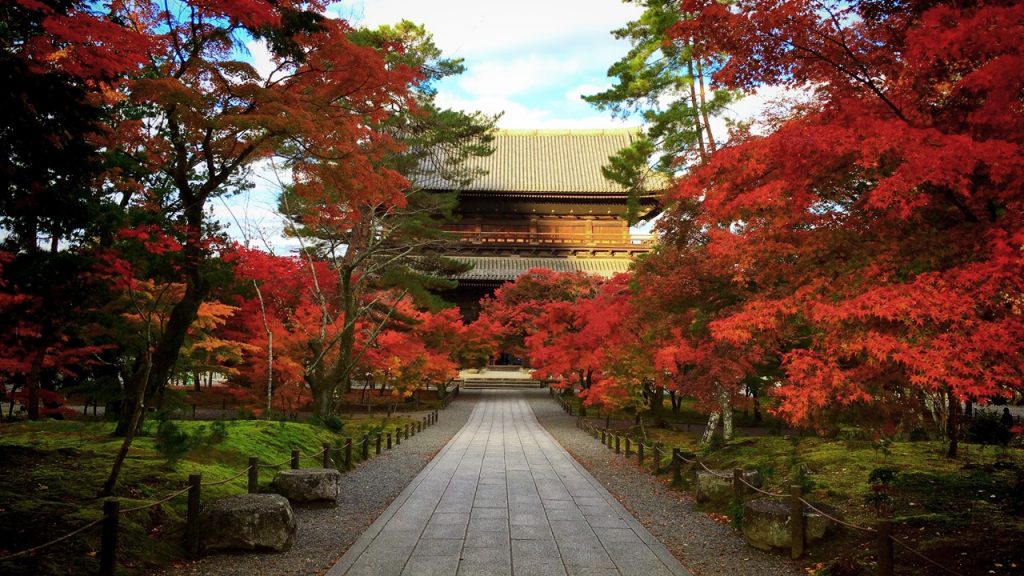
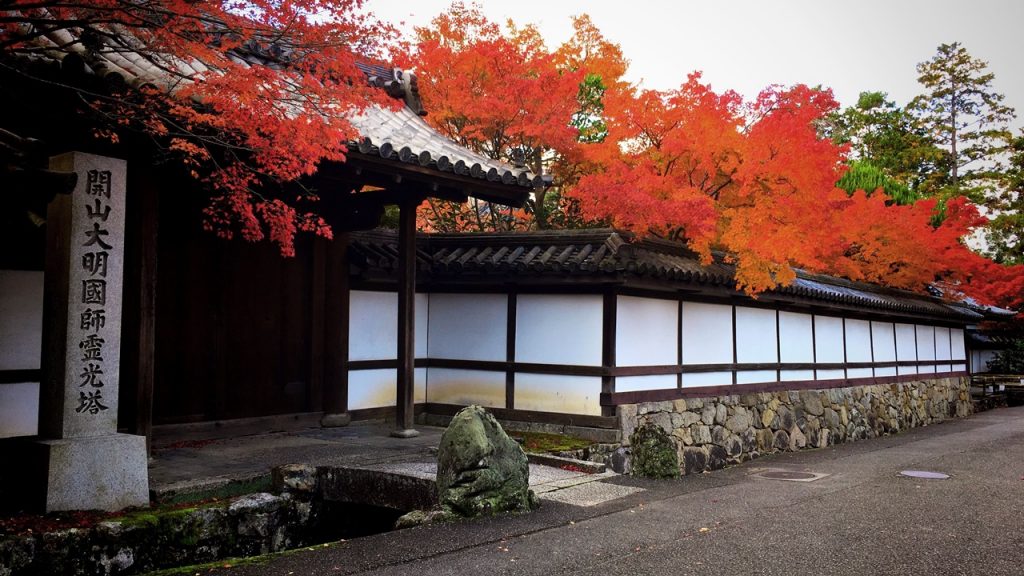
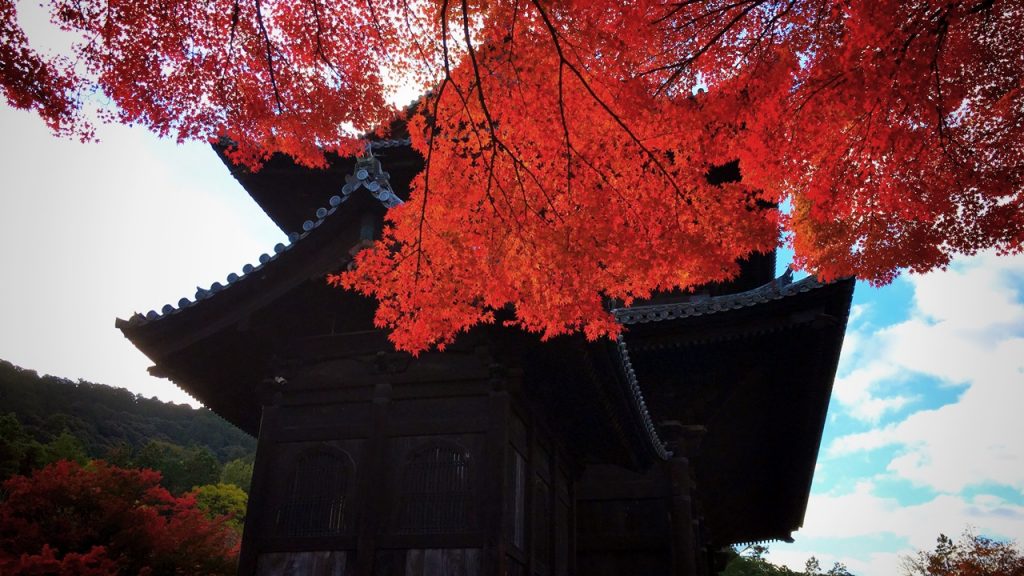
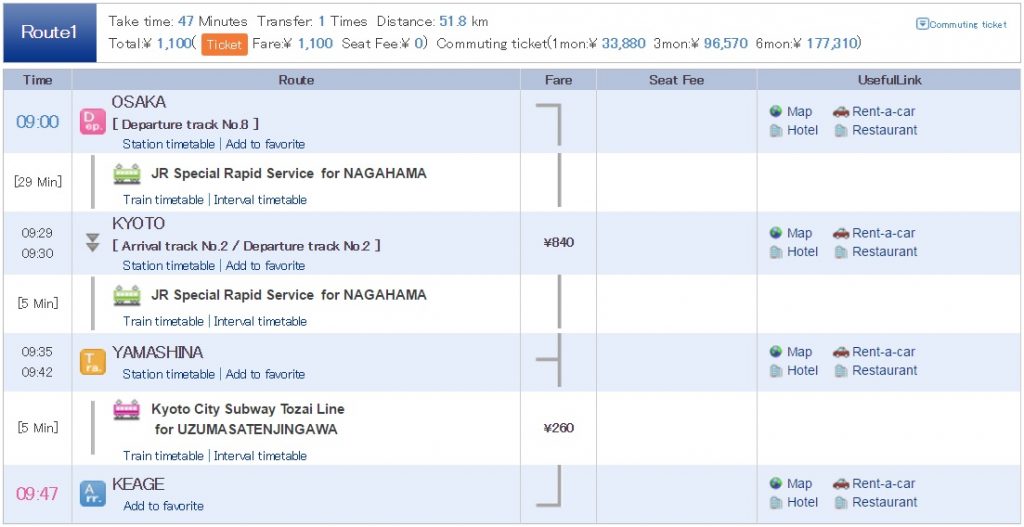
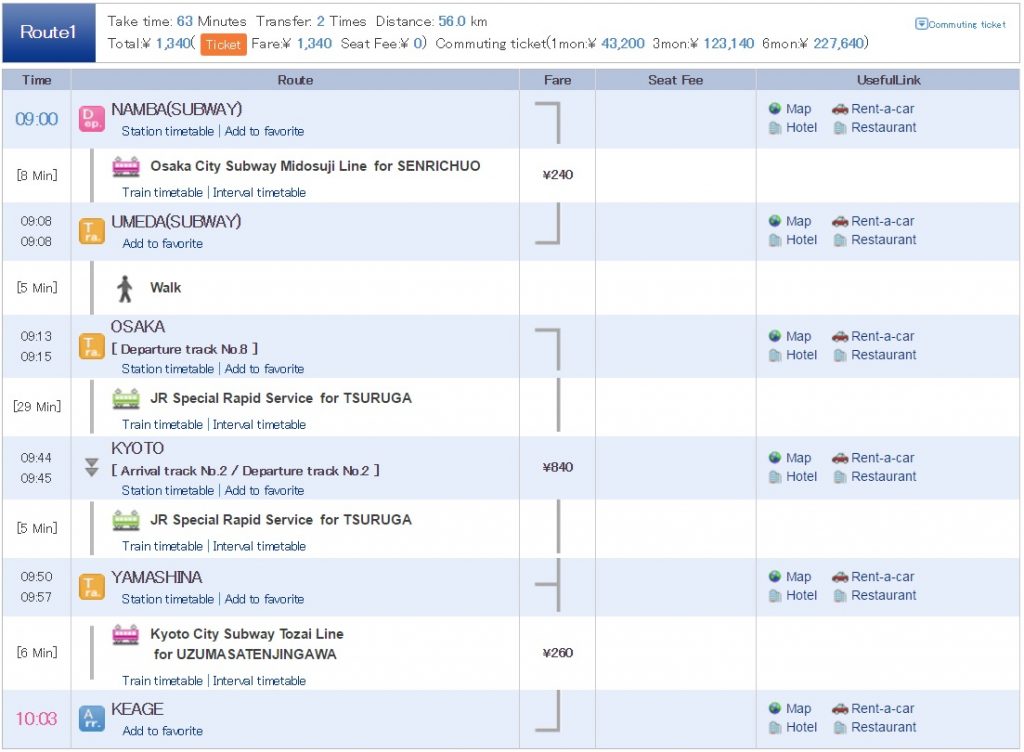
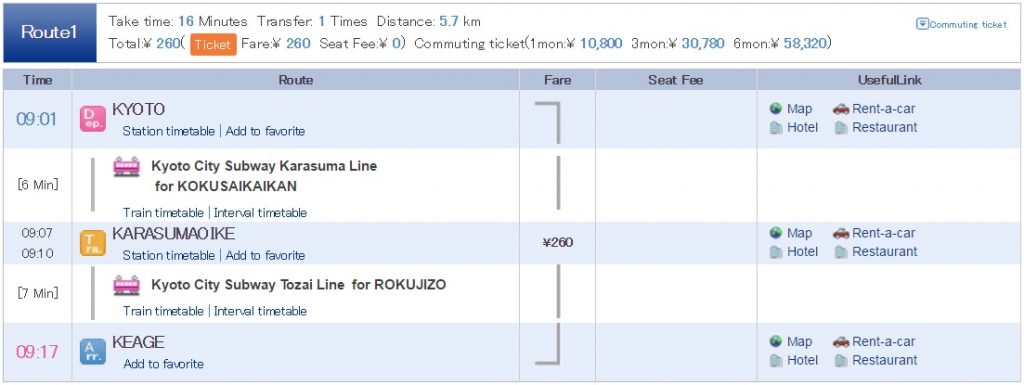


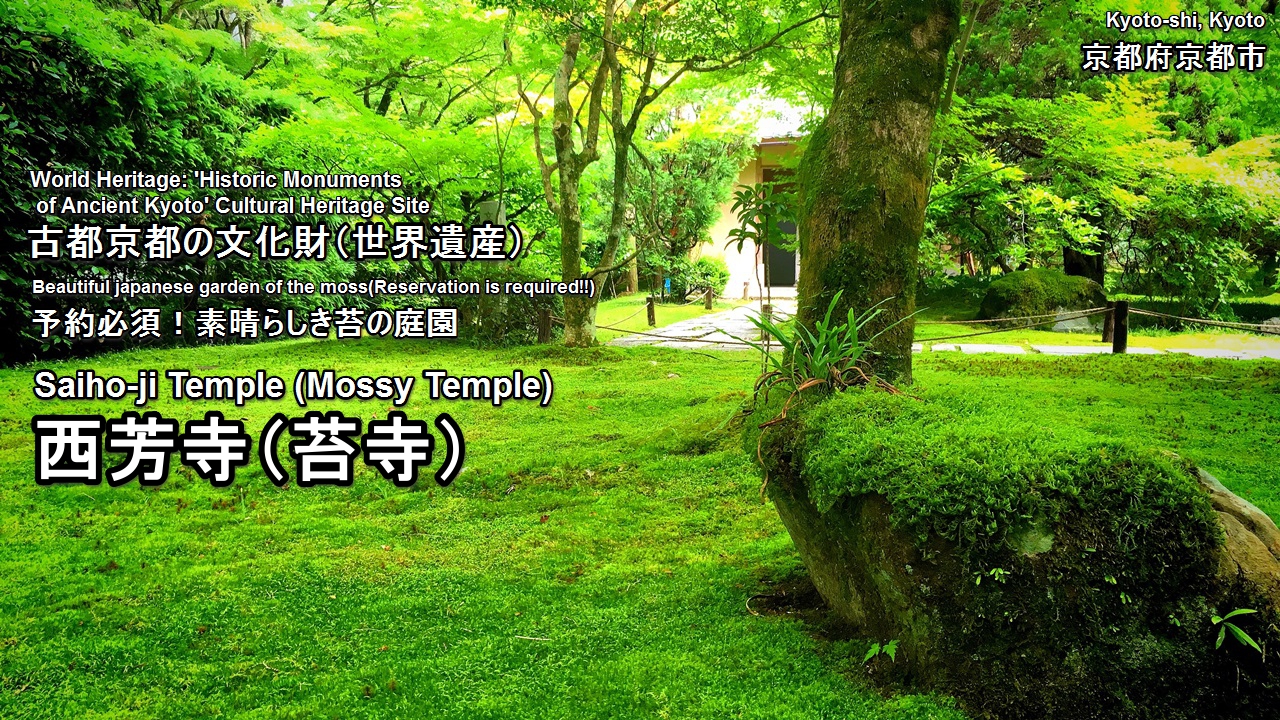
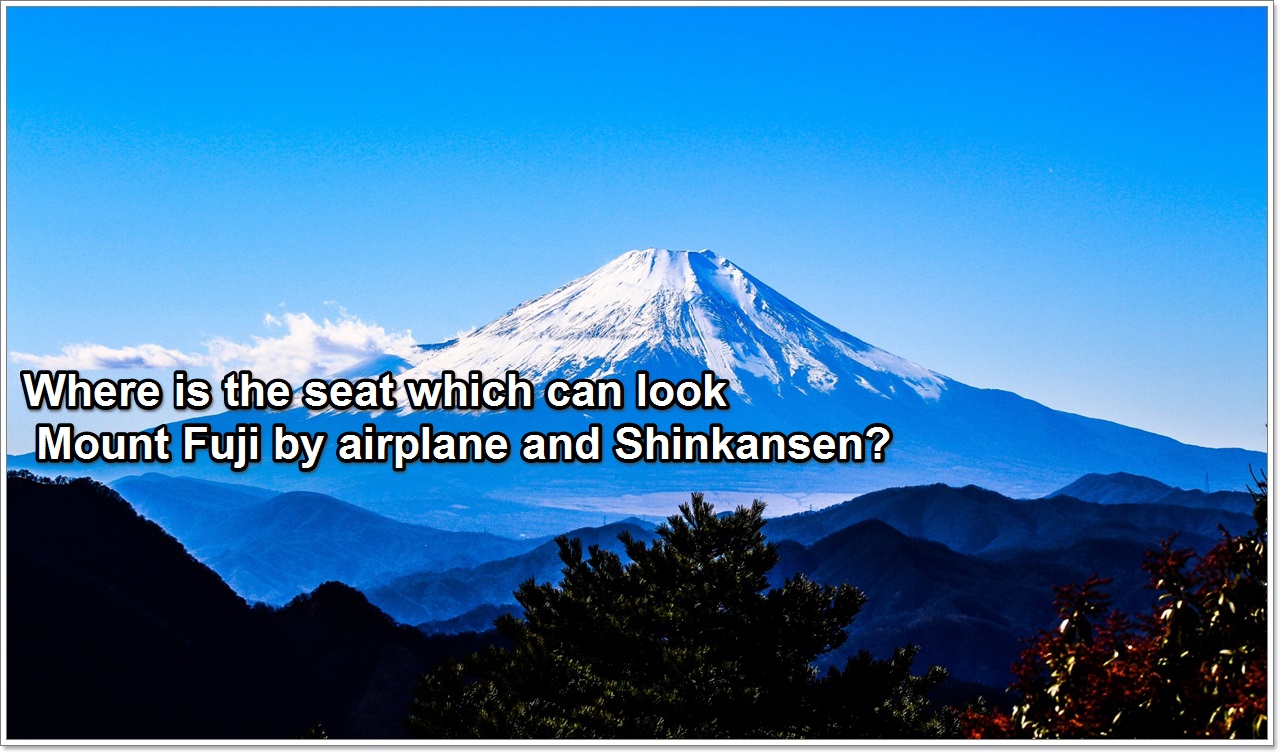
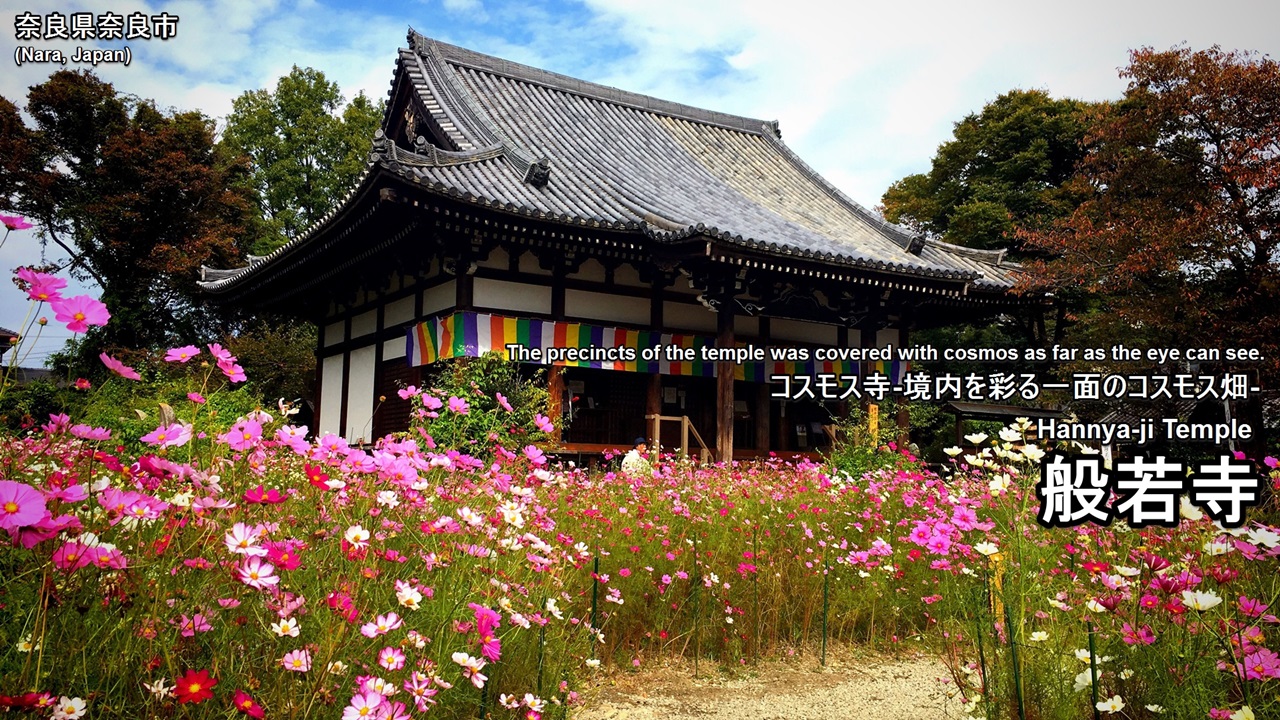
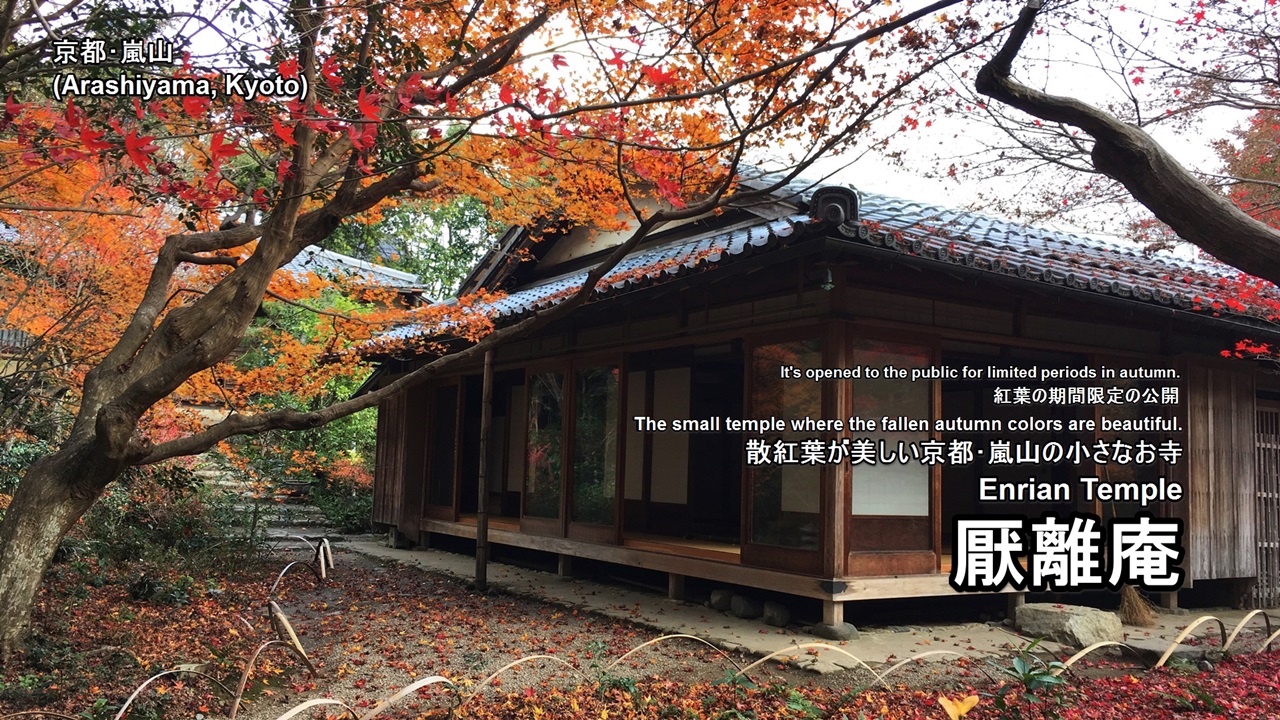

Thank you for this detailed account of your visit to Nanzenji! It has brought back great memories of our trip there and made me realise that we should have spent longer to take in all the different parts of the site. I wish I had found this site before we went.
Thank you for your comment!